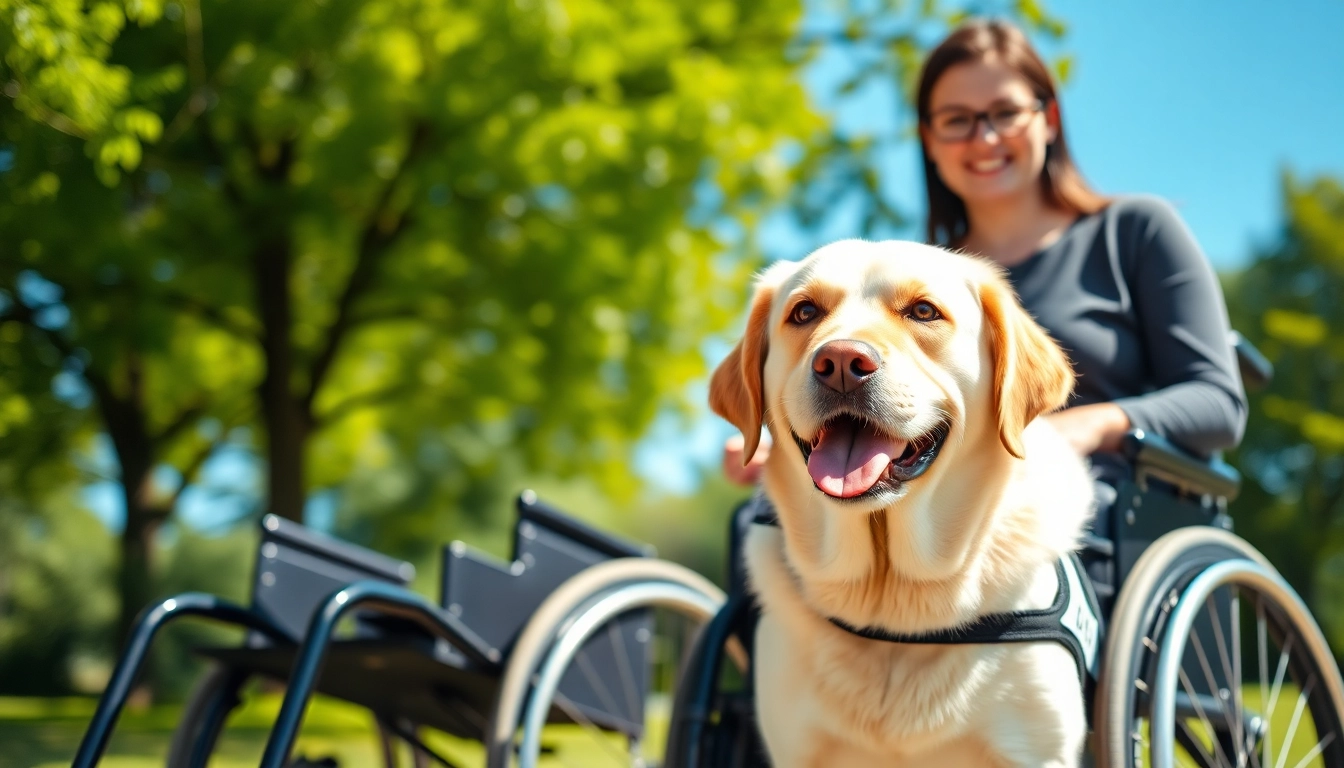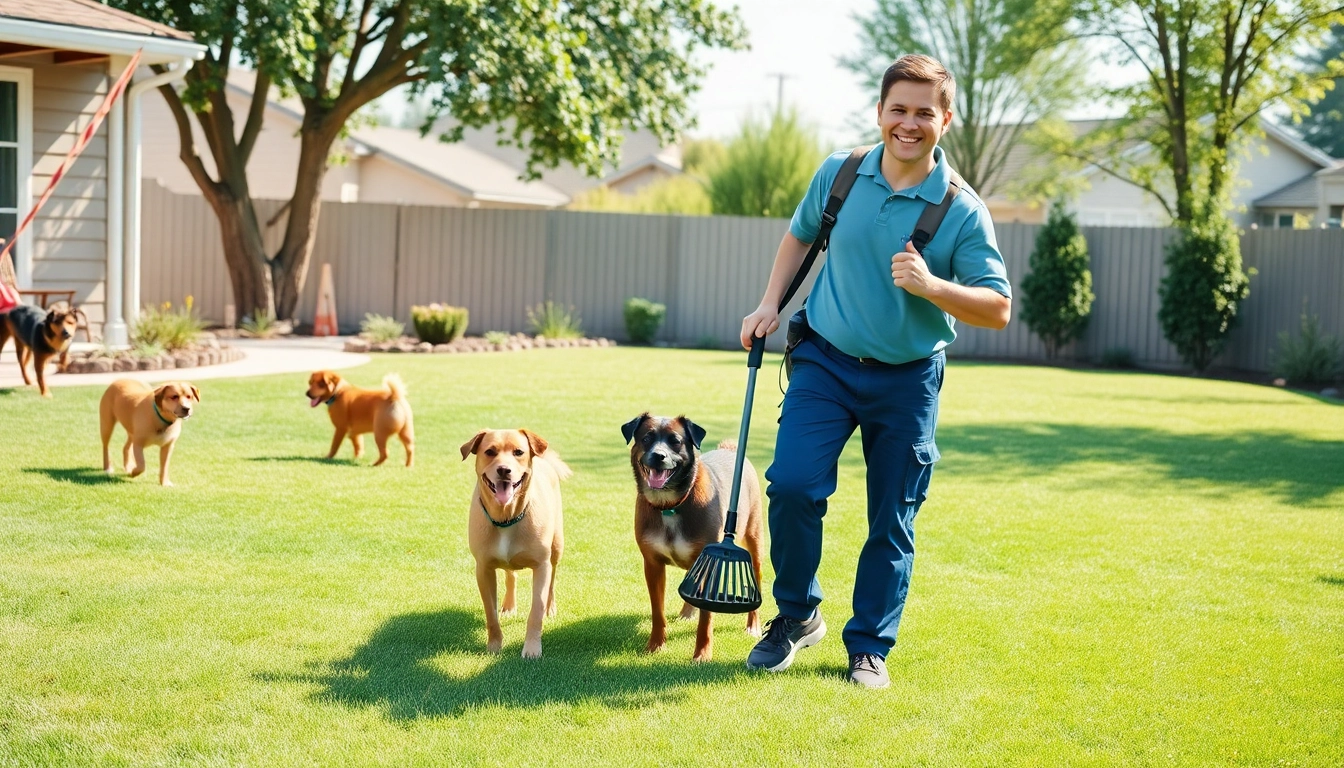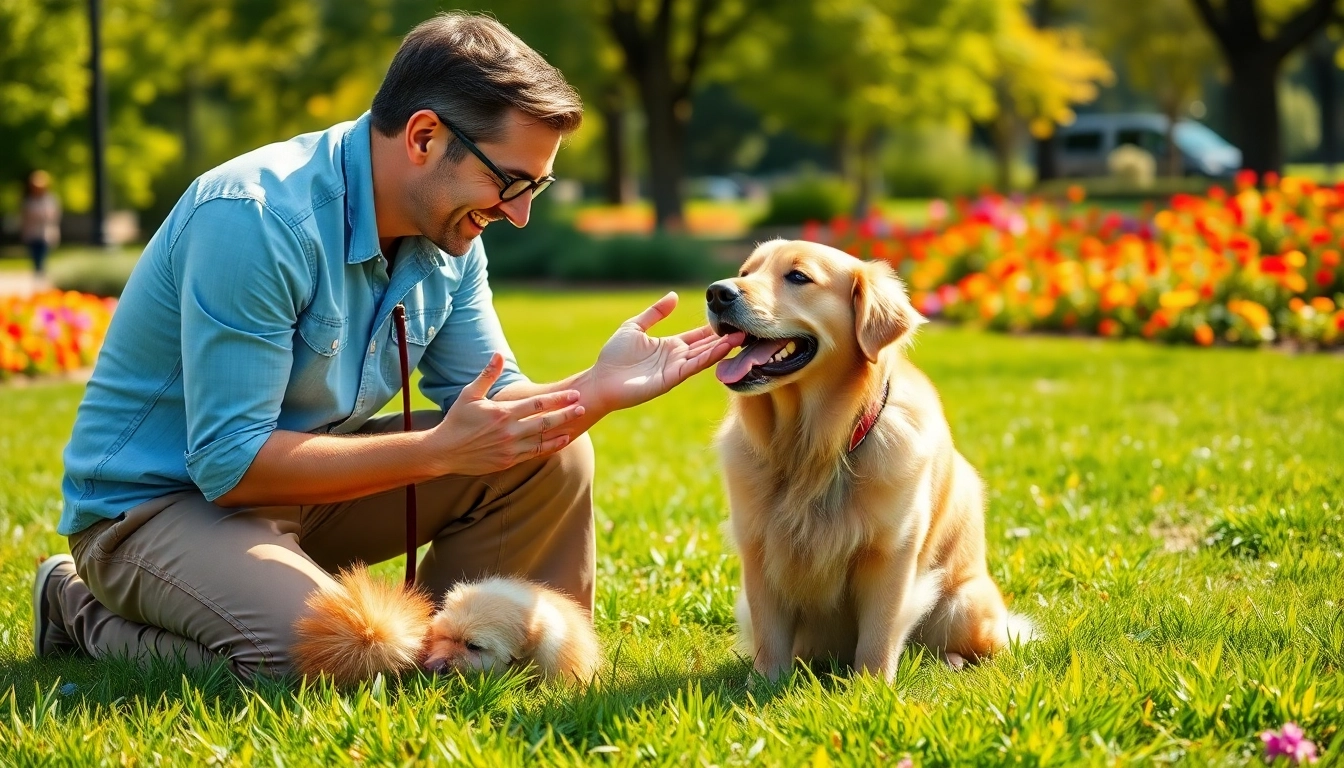Understanding Service Dogs and Their Importance
Service dogs are more than just pets; they are trained companions that perform specific tasks to aid individuals with disabilities. For many, the journey to buy a service dog represents hope, independence, and enhanced quality of life. Understanding what service dogs do and how they can transform lives is essential for potential owners.
Definition and Roles of Service Dogs
A service dog is a specially trained canine that assists individuals with various disabilities. The Americans with Disabilities Act (ADA) defines a service animal as a dog that is individually trained to do work or perform tasks for individuals with disabilities. This can include physical disabilities, psychiatric conditions, and other health-related issues. Unlike emotional support animals, service dogs are authorized to accompany their handlers in virtually all public places, performing tasks such as guiding individuals with visual impairments, alerting those who are deaf, or helping individuals with mobility issues.
Types of Service Dogs Available
There are several types of service dogs, each trained to assist with specific needs:
- Guide Dogs: Trained to assist visually impaired individuals by guiding them safely around obstacles.
- Hearing Dogs: Alert individuals who are deaf or hard of hearing to important sounds, such as doorbells or alarms.
- Mobility Assistance Dogs: Help individuals with physical impairments navigate daily tasks, offering support and stability.
- Medical Alert Dogs: Trained to recognize medical conditions (e.g., seizures, low blood sugar) and alert their handlers or others.
- Psycho-social Service Dogs: Assist individuals with psychiatric conditions, including PTSD and anxiety disorders, by providing comfort and performing specific tasks that alleviate symptoms.
The Unique Benefits of Owning a Service Dog
Owning a service dog provides numerous benefits beyond basic assistance. These dogs foster independence, increase confidence, and reduce feelings of isolation. They can promote physical activity and social interaction, enhancing the handler’s overall well-being. Additionally, many individuals report improved emotional and psychological health due to the companionship and support a service dog offers.
Steps to Buy a Service Dog
The process of acquiring a service dog can be complex and requires careful planning and consideration. Below are the key steps to ensure a successful experience.
Researching Service Dog Breeders and Organizations
The first step to buying a service dog is research. Not all breeders or organizations are created equal, and finding the right one is crucial. Seek out reputable service dog organizations with accredited training programs. Read reviews, ask for recommendations, and remember to verify certifications. Consider not only the training standards but also the organization’s follow-up support, as the relationship with your service dog is a long-term commitment.
Application Process for Service Dogs
Once you have identified potential organizations, the next step is to apply. Typically, this process includes filling out an application form that details your medical history, specific needs, and lifestyle. Many organizations may require an interview or assessment to determine the best match between the applicant and the available service dogs.
Costs and Financial Considerations of Buying a Service Dog
Understanding the financial implications of acquiring a service dog is essential. The costs can vary widely, with pricing ranging from a few thousand dollars to upwards of $30,000 depending on training, type of dog, and the organization’s reputation. It’s crucial to factor in ongoing costs such as veterinary care, food, and training refreshers. Research potential funding sources, grants, or programs that may subsidize costs, as these options exist to assist individuals in need.
Training and Socialization for Your Service Dog
Training is a vital component in the life of a service dog, ensuring that they can perform their tasks reliably and safely.
Importance of Professional Training
While some handlers may attempt to train their service dogs independently, professional training is highly recommended. Certified trainers specialize in the unique skills required for service animals, including obedience commands and specific task performance. This training not only improves the dog’s skills but also strengthens the bond between the handler and the dog.
Ongoing Socialization Tips
Socialization is crucial for service dogs, as they need to navigate various environments confidently. Regular exposure to different people, animals, and settings prepares them for public outings. Owners should actively engage in socialization exercises and seek opportunities, such as dog parks and community events, which foster positive experiences.
Monitoring Your Dog’s Development
As your service dog matures, continually assess their development. Look for signs of stress or anxiety, and don’t hesitate to consult with trainers or behaviorists if concerns arise. Regular training refreshers can help reinforce skills and boost your dog’s confidence, ensuring they remain effective helpers.
Legal Guidelines and Rights When Owning a Service Dog
Understanding the legal rights associated with service dogs is crucial for both owners and the general public.
Understanding ADA Regulations
The Americans with Disabilities Act provides clear guidelines regarding the rights of service dog handlers. According to the ADA, service dogs are permitted in all public places, including restaurants, stores, and public transportation. However, it is important to differentiate between service dogs and emotional support animals, as the latter do not have the same legal protections.
Public Access Rights for Service Dogs
Public access rights stipulate that service dogs must be allowed in all areas where the general public is permitted. However, handlers should ensure their dogs are well-behaved in these environments, as disruptive behavior can jeopardize the rights of service dog teams overall. It’s equally important for the public to understand these rights to ensure respectful interactions.
Addressing Common Misconceptions
Many misconceptions exist about service dogs, leading to misunderstandings and discrimination. One common belief is that service dogs are merely pets or a form of emotional support. It’s vital to clarify that service dogs are specifically trained to assist individuals with disabilities in completing tasks that they cannot do alone.
Maintaining a Healthy Relationship with Your Service Dog
The bond between a service dog and their handler is built on trust, respect, and mutual understanding. Fostering this relationship is essential for both parties.
Nurturing Emotional Bonds
Invest time in building a strong emotional connection with your service dog. This involves understanding their body language, recognizing their emotional needs, and spending quality time together. Positive reinforcement techniques enhance communication and foster a trusting relationship.
Routine Care and Health Maintenance
Regular health check-ups, proper nutrition, and exercise are vital for your service dog’s well-being. Develop a consistent care routine that includes veterinary visits, feeding schedules, and exercise regimes tailored to your dog’s needs. Keeping your service dog healthy is crucial in ensuring they can fulfill their role effectively.
Community and Support Resources for Service Dog Owners
Connecting with other service dog owners can provide valuable support and resources. Join online forums or local communities to share experiences, challenges, and tips for navigating life with a service dog. These connections contribute not only to personal growth but also to a greater understanding of the service dog community.



